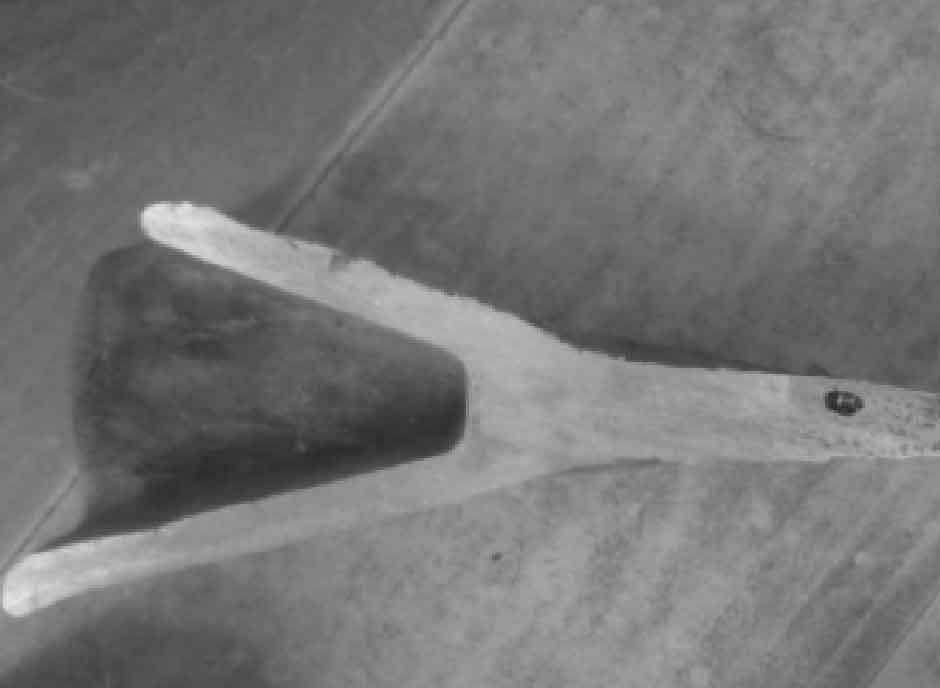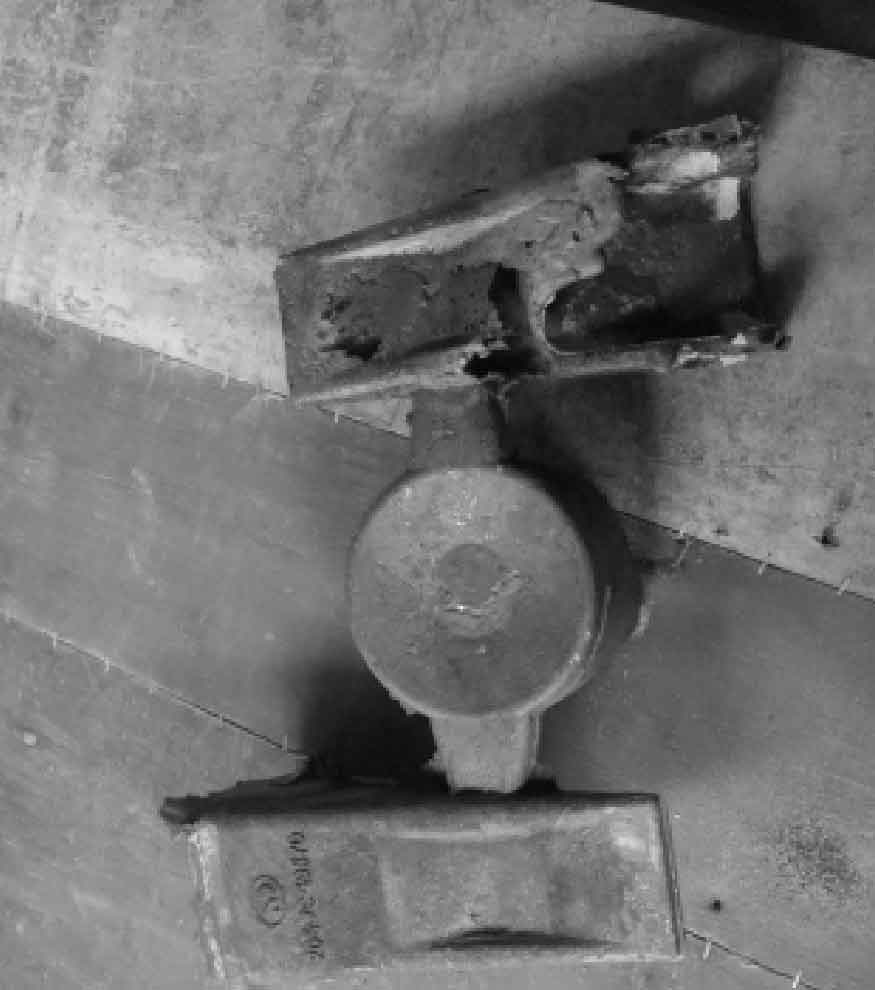There are two main forms of incomplete forming of bucket teeth in Squeeze Casting: incomplete bucket teeth and incomplete forming of double cavities. Two cavities cannot form two parts at the same time, only one or both can not be formed completely.
Fig. 1 is a picture of the incomplete bucket teeth. It can be seen from Fig. 1 that the incomplete part is mainly the tooth cavity, and the incomplete form is mainly the meat of the workpiece.
The double cavity is not fully formed, as shown in Figure 2. As can be seen from Figure 2, only one of the two workpieces can be formed, and the other workpiece cannot be completely formed in the upper cavity.
It is found in the trial production that the incomplete forming defects are closely related to the squeeze casting process parameters, as shown in the table:
| Serial number | Squeeze casting specific pressure / MPa | Mold preheating temperature / ℃ | Pouring temperature / ℃ | Pressure holding time / S | Defect form |
| 1 | 80 | 150 | 1 600 | 15 | Double cavity incomplete forming |
| 2 | 90 | 200 | 1 600 | 15 | Incomplete bucket teeth |
According to the forming principle of squeeze casting, the forming of bucket teeth is a process in which the liquid metal flows from the pressure chamber to the mold cavity under the action of pressure. The pressure of the cavity and the friction force between the liquid and the metal mold wall are the dynamic force. When the power is greater than the resistance, the liquid metal can flow, otherwise the liquid metal will stop flowing. If the difference between power and resistance is called effective filling pressure, then as long as the effective filling pressure is not zero, the liquid metal will flow and fill.
On the contrary, when the effective filling pressure is equal to zero, the liquid metal will stop flowing and the filling process will stop, forming the defect of bucket teeth. The effective filling pressure can be deduced according to rheology and gas law. According to the alloy rheological mechanics, the liquid metal near the liquidus belongs to non-Newtonian fluid, which has a critical shear stress. The liquid metal can flow only when the stress generated by the external pressure in the liquid metal is greater than this critical shear stress.
In addition, the die of squeeze casting is a metal mold, and the gas in its cavity is mainly discharged by parting surface and assembly gap. If the discharge is not smooth, with the filling of liquid metal, the gas temperature in the cavity increases, but the volume is compressed, resulting in the continuous increase of pressure. This pressure will counteract the filling pressure. When the two reach equilibrium, the liquid metal will not continue to fill the cavity.
According to the above analysis, the technical ways to prevent incomplete forming are:
① Increase the preheating temperature of the die to 250 ℃ and the specific pressure of squeeze casting to 100MPa;
② Strengthen the mold exhaust system and set two at the highest point of the upper mold cavity φ 10mm vent;
③ Raise the pouring temperature to 1620 ℃.


